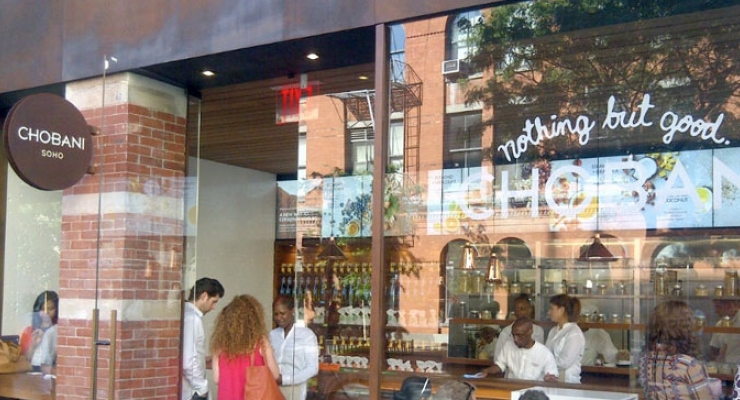Bradley Reeves09.12.13
|
The author, Bradley Reeves, senior brand strategist at Anthem. |
Likewise, manufacturers are seizing opportunities to deepen consumer relationships through their own specialized physical stores.
The lines between sales channels are blurring like never before, as innovative, omni-channel companies are figuring out how to seamlessly integrate what today’s consumers want most.
Products Evolving to Destinations
Chobani
|
Chobani's yogurt bar in the Soho area of New York City. |
Chobani SoHo builds off of the brand’s popular Greek yogurt and turns out artisanal creations by mixing in seasonally inspired, fresh, gourmet ingredients. Each is handcrafted by “Yogurt Masters” to deliver an impressive presentation and flavor profile.
A perfect fit for the neighborhood, Chobani has created a sophisticated, authentic and wholesome brand experience—an entirely new usage opportunity prime for social media buzz and new product extensions.
Nespresso
Nespresso has taken “showrooming” to a whole new level with the launch of its first West-Coast boutique bar, located in San Francisco’s renowned Union Square.
The new-shop-on-the-block’s neighbors are no accident—kitty-corner to names like Hermès, Prada, Monte Blanc and Porsche, Nespresso is surrounded by luxury shopping’s elite. The 7,400 square foot, two-story bar combines premium coffee with exceptionally beautiful space, to create a prestigious experience.
As a result, the machines and pods on display begin to transform from mere merchandise to modern art… customers can bask in the upper class lifestyle, and then extend the experience by taking Nespresso products home with them or ordering online.
Polaroid
Polaroid hopes to shake up the world of photography with the launch of it’s first brick-and-mortar store dedicated to helping people tap into their smart-phone photos and turn them into artwork suitable for display.
Straight from the Apple retail playbook, the Polaroid Fotobar offers sleek, modern lines and interactive Mac-based workstations. Experienced photographers and photo manipulators are there to help you jazz up your best photos and have them printed on materials like canvas, metal, acrylic, and bamboo.
Polaroid hopes to complement its products and online services with the Fotobar, betting that this interactive experience will be fun and educational enough for customers to keep them coming back.
Online Retailers Pursue Offline Solutions
Fab.com
|
Fab.com's brick-and-mortar location in Germany. |
The stores will build on Fab’s “Designed By You” furniture customization platform, allowing customers to interact with the tangible product and more thoroughly enjoy planning their design.
Bonobos.com
Originated to solve men’s dilemma of ill-fitting pants, Bonobos started out as one of the resolute online pure plays, but they soon realized that a significant amount of would-be customers wouldn’t order online without experiencing the clothing first in person.
Hence, the Guideshop—a place solely designed for trying items on and placing orders while in the shop for home delivery. This highly customized physical space uniquely relieves one of the biggest pain points for online apparel shopping today.
Piperlime.com
|
Piperlime's 4,000 sq. ft. store on Wooster Street in New York City's Soho, which is the e-tailer's first brick-and-mortar location, opened in Fall 2012. |
Piperlime’s loyal following of fashion-involved women asked for a place to experience the brand in person—Piperlime responded with a boutique-style location featuring an edited assortment of trends, complete head-to-toe looks and in-store associates to help customers find styles they’ll love.
Merchandised like the website, items are arranged by seasonal trends and picks from Piperlime’s retail gurus, providing a unified extension to the online experience.
Conclusion
These new models embrace the physical space and show how savvy businesses are listening to their customers, understanding how they want to shop and tailoring all channels accordingly.
Each of these offline ventures taps into an understanding that sales are about service, not selling. Many ensure their staff has as much information and expertise, if not more, than the customer has.
They recognize that competitive channels are instantly available and are therefore seamlessly integrating all of their own for a consistent and synergistic brand experience.
Their new omni-channel supply chains are promoting any combination of inventory search, purchase and delivery. It’s clear the role of the physical store is changing, as innovators adapt offline shopping to deliver an unprecedented level of freedom…so consumers can have whatever they want, when and wherever they want it.













